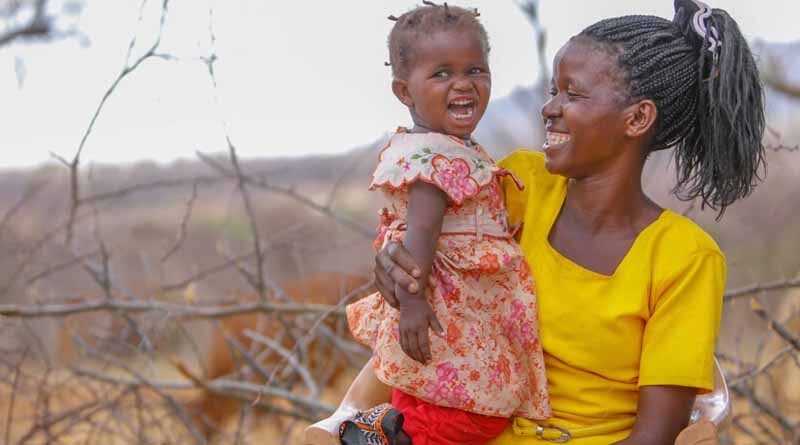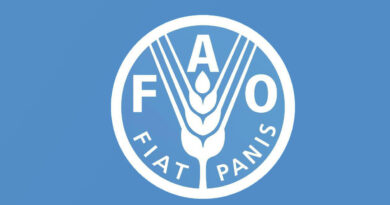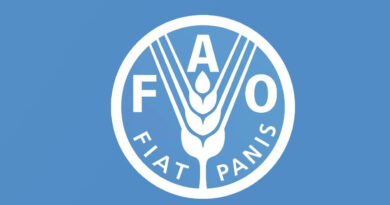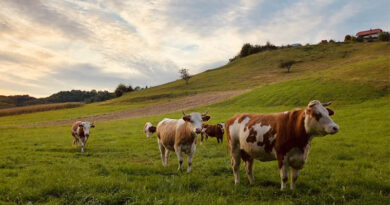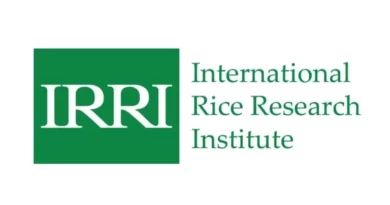Leave no one behind – fulfilling our promise
17 October 2022, New York: On September 20, 2022, on the sidelines of the 77th session of the United Nations General Assembly in New York, several nations, including the United States of America, the European Union and the African Union, came together to issue an appeal to governments, organizations and private industry to collaborate and respond to the urgent global food security needs of billions of people around the world.
The hunger crisis in the Horn of Africa has reached alarming levels as the region is now dealing with a fifth consecutive failed rainy season and a prolonged drought that began in October 2020. According to aid agencies, more than 37 million people in the Horn of Africa are facing acute hunger while nearly nine million livestock has perished. Somalia may be the worst hit where more than 700 children died of malnutrition this year.
This tragedy is not only happening in the Horn of Africa. Hunger and malnutrition are a part of daily life for many millions around the world. Women and girls are disproportionately affected by the climate crisis as it magnifies inequality, poverty, and displacement and may increase the likelihood of conflict. Women and girls face multiple protection concerns, such as their safety in new resettlement sites, fear of exploitation, and violence stemming from changes in gender roles due to the loss of or injury to male family members. Young girls often must walk long distances to fetch water and fuel putting them at risk of kidnapping and sexual violence.
Our current food and agriculture systems have failed the world’s most vulnerable populations, culminating in humanitarian crises using up resources that could have been better invested in creating agriculture infrastructure, or funding agriculture research to meet the food and nutrition security needs of countries and regions, particularly those impacted by climate change. Armed conflict, global supply chain disruptions, high levels of inflation and weather extremes are the main drivers of acute food insecurity across the 20 hunger hot spot regions of the world according to a recent joint FAO-WFP publication.
At the 77th session of the United Nations General Assembly, more than 100 UN Member States endorsed the Roadmap for Global Food Security – Call to Action issued in May 2022 at the Global Food Security Ministerial Meeting. Among the seven specific lines of action endorsed by the Member States, two actions stand out for their long-term impact on building resilient food systems: a) Accelerate efforts to support sustainable agriculture and food systems, through strengthening agricultural productivity, particularly in the most affected countries to build their resilience and support domestic production, including as appropriate through efforts to support an energy transition that is just and equitable, to make them more resilient and available to producers of all scale, including smallholder farmers; and b) Increase investments in research and technology to develop and implement science-based and climate-resilient agricultural innovations, including seeds, that contribute to building sustainable and resilient agricultural sectors and food systems.
International agricultural research organizations such as ICRISAT, with a strong network of partners and stakeholders from around the world, are at the forefront of creating sustainable agriculture and food systems for vulnerable populations. Apart from the challenges confronting systems – climate change, soil degradation, reduced availability of water for agriculture – another less recognized challenge is loss of nutritional quality. It is well documented that yield increases produced by fertilization, irrigation, and other environmental means tend to decrease the concentrations of minerals in plants.
A study published in the Journal of the American College of Nutrition has documented that for 43 garden crops, mostly vegetables, there has been a decline in important nutrients, such as protein, calcium, phosphorous, iron, riboflavin (vitamin B2) and ascorbic acid (vitamin C) over the period 1950-1999. The declines range from 6% for protein to 38% for riboflavin. A study in the British Food Journal compared the mineral content of 20 fruits and 20 vegetables between 1930 and 1980. The study shows significant reductions in the levels of calcium, magnesium, copper, and sodium in vegetables and magnesium, iron, copper, and potassium in fruits. Other studies examining the impact of increasing carbon dioxide on the nutritional quality of rice have found increasing levels of carbon dioxide are positively correlated with the decline in protein, iron, zinc, and vitamins B1, B2, B5, and B9. This is of concern as large numbers of people in Southeast Asia, Bangladesh and India derive more than half of their dietary energy from rice. Several countries in Africa like Guinea, Senegal, Côte d’Ivoire, and Madagascar have become more reliant on rice as a percentage of their caloric supply.
Given all the challenges we face, how can we create resilient, nutritious, equitable food systems that provide for the food and nutrition needs of the most marginalized? Incorporating crops such as millets and sorghum that have been traditionally grown and consumed is an important first step. These crops have higher levels of nutrients compared to the commonly consumed cereals – rice, wheat, and maize. Millets grow on poor soils and are naturally adapted to climate stresses such as high temperatures, and low precipitation. Resource-poor smallholder farmers can grow these crops easily as they do not require too many external inputs. However, traditional crops are characterized by underfunding for research and development, very little attention from agriculture extension services, weak and underdeveloped value chains, lack of awareness about their nutritional value, a perception that they are a ‘poor farmer’s crop’ and low interest among farmers and industry due to lack of demand. No longer the ‘poor farmer’s crop’ these crops can be the food that can feed our future; these crops are the focus of the UN International Year of Millets 2023 with the intent to increase global focus on millets, and global appreciation of their nutrient content as well as the opportunities these crops bring not only for our diets but for income generation for farmers in the drylands.
Bringing millets and other traditional crops back into our diets, with appropriate public investments in creating agriculture infrastructure, adequate funding for research and technology for neglected crops and cutting down food loss and waste can create food systems that are nutrition-sensitive, gender-sensitive, resilient, cause minimal environmental harm and are more equitable. This will truly fulfil the promise of ‘Leave No One Behind’ the theme of this year’s World Food Day.
Also Read: Indian fertilizer shop to become PM Kisan Samridhi Kendra; PM Modi to launch 600 Kisan Samridhi Kendras
(For Latest Agriculture News & Updates, follow Krishak Jagat on Google News)

